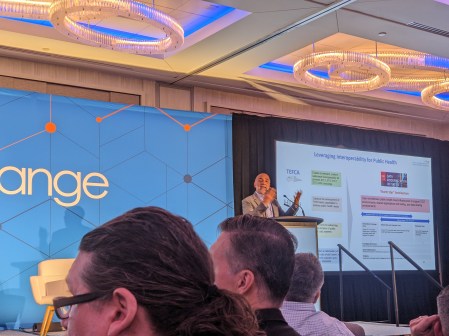10 years later: Open data in the Katrina recovery
In 2005, Hurricane Katrina rendered New Orleans a crumbling shadow of its former self. From the perspective of first responders, recovery seemed a nearly impossible feat — and it may have remained one, argues a White House blog post, if not for an influx of data that guided reconstruction crews tasked with reviving the battered city.
The category 5 superstorm ruptured levees and flooded the city, killing 1,500 people and exacting $125 billion in damages. Aid organizations and citizens alike were faced with disaster on an unprecedented scale. About 300,000 homes were destroyed, with 118 million cubic yards of debris remaining to be removed.
“Understanding the extent of the flooding, conducting damage assessments, providing temporary housing for displaced residents, rebuilding the levee system, distributing rebuilding dollars, and issuing building and demolition permits…” wrote Denice Ross, Presidential Innovation Fellow, describing the effort’s scale in the blog post, which published Tuesday on Medium. “One of the great lessons we learned through the experience was the power of data to illuminate our path to recovery.”
Among the barriers to launching an effective campaign to rebuild the devastated city was a distinct lack of data.
“Ten years ago, the concept of ‘open data’ had not yet taken hold within the government,” Ross wrote. “The public could view some government records, one at a time, but because the data were not available in their entirety — in a structured, machine-readable, ‘open’ format — citizens couldn’t download, analyze or innovate on these data sets.”
This lack of information hindered all fronts of the effort to rebuild, from nonprofits to real estate agencies, construction companies, the Federal Emergency Management Agency, and neighborhood associations. Without information on layouts, population density, blueprints and other municipal datasets, first responders were effectively paralyzed. During this period, Ross said bootlegged copies of datasets were being transferred through the ranks of recovery personnel.
Gradually, small-scale efforts to collect data, many with pen and paper, were launched and larger sets were compiled, enabling the greater push toward recovery to continue.
The crucial role that data played in facilitating the recovery effort, argues Ross, was a major driver in prompting the government to embrace open data initiatives. In 2009, then-U.S. Chief Information Officer Vivek Kundra launched Data.gov, a watershed in the open data movement. “As people began to use the data, public expectations about access to government data started to change,” Ross said.
The launch of Data.gov acted as a catalyst for a slew of smaller-scale efforts at the federal and state level, including the White House’s Climate Data Initiative, Police Data Initiative, and Innovation for Disaster Response and Recovery Initiative.
“I believe history will reflect on this 10-year anniversary as a tipping point,” wrote Ross, “when the open data ecosystem in New Orleans finally reached escape velocity — breaking free from the gravitational pull of old, closed ways of running government and onto an unstoppable path of transparency, civic participation and collaboration.”






